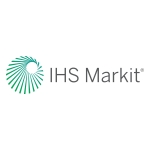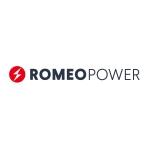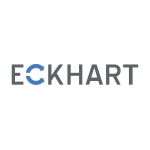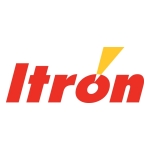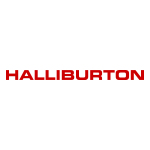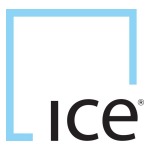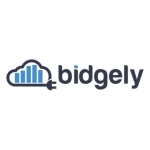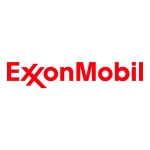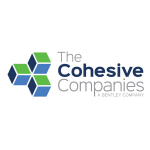Company Also Updates Shareholders on Progress Towards Completing its Previously Announced Merger with Pineapple Energy
MINNETONKA, Minn.--(BUSINESS WIRE)--Communications Systems, Inc. (NASDAQ: JCS) (“CSI” or the “Company”), an IoT intelligent edge products and services company, today announced financial results for the fourth quarter and full year (“FY”) ended December 31, 2020.
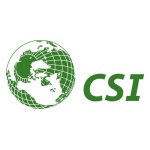
Q4 2020 Financial Highlights vs Q4 2019
-
Q4 2020 consolidated sales from continuing operations decreased by 24% to $11.7 million compared to $15.4 million in Q4 2019, due to lower sales from the Electronics & Software segment compared to Q4 2019 when this segment realized $4.2 million in revenues from a single intelligent transportation project and the continuing impact of project delays driven by COVID-19, partially offset by the increased revenues in the Services & Support segment.
-
Q4 2020 consolidated operating loss from continuing operations was $133,000, compared to Q4 2019 consolidated operating income from continuing operations of $1.2 million:
-
Electronics & Software operating income was $1.0 million versus $2.8 million in Q4 2019;
-
Services & Support operating loss was $60,000 versus an operating loss of $245,000 in Q4 2019; and
-
Other corporate costs, including indirect costs related to discontinued operations, were $1.1 million versus $1.4 million in Q4 2019.
-
Q4 2020 discontinued operations income was $171,000 compared to income of $505,000 in Q4 2019.
-
Q4 2020 consolidated net loss was $3,000, or $0.00 per diluted share, compared to a net income of $1.7 million, or $0.18 per diluted share in Q4 2019.
FY 2020 Financial Highlights vs FY 2019
-
FY 2020 consolidated sales from continuing operations decreased by 16.4% to $42.6 million compared to $50.9 million in FY 2019.
-
FY 2020 consolidated operating loss from continuing operations was $2.7 million compared to income of $9,000 in FY 2019.
-
Other corporate costs, including indirect costs related to discontinued operations, were $4.0 million in both FY 2020 and in FY 2019.
-
FY 2020 discontinued operations income was $1.6 million compared to income of $6.2 million in FY 2019.
-
FY 2020 consolidated net loss was $172,000, or ($0.02) per diluted share, compared to a FY 2019 net income of $6.5 million, or $0.69 per diluted share.
-
Cash, cash equivalents, and liquid investments totaled $21.5 million, working capital was $28.3 million and stockholders’ equity was $47.5 million as of December 31, 2020.
Anita Kumar, CEO of CSI commented, “Our full year 2020 financial results were negatively affected by the COVID-19 pandemic. Our commercial customers, both in the U.S. and internationally, were substantially affected by reduced growth in building lighting and automation, security and surveillance and intelligent transportation applications, which resulted in delays and declines in project spending. This decline was partially offset by strong demand from the U.S. Federal government. While the duration and the global economic effect of this pandemic is outside of our control, during the year we took several steps to adjust to this challenging new operating and economic environment. We implemented cost-reduction measures, which partially offset lower revenue and resulted in positive operating income and net income for the second half of 2020.”
Dr. Kumar added, “Both our business segments remain fundamentally strong due to the investments we made in new technologies. These investments are aimed at developing easy-to-use / easy-to-integrate software and services that address demand from critical infrastructure initiatives, including security and surveillance, intelligent transportation, smart buildings, and smart cities. With the acquisition of Ecessa, a designer and distributor of SD-WAN for businesses, we expanded our services and support segment broadening our portfolio of products and services. Also, the minority investments we have made in Quortus, Kogniz and Spyrus expanded our ability to explore providing Private LTE, Artificial Intelligence and secure network access solutions to our customers.”
Progress Made Towards Completing its Previously Announced Merger with Pineapple Energy
Of note, on March 2, 2021, CSI announced the signing of a definitive merger agreement with privately held Pineapple Energy, LLC (“Pineapple”), a growing U.S. operator and consolidator of residential solar, battery storage, and grid services solutions. Upon obtaining shareholder approval for the merger and closing, CSI will commence doing business as Pineapple Energy, with a business model focused on the rapidly growing home solar industry.
Commenting on the progress made towards completing the merger with Pineapple, Roger Lacey, Executive Chairman of CSI, commented, “As per the terms of the merger, we intend to divest all of our existing business lines, real estate holdings and other investments, and distribute the proceeds to CSI Shareholders. Currently, we are in discussions with potential buyers for both our operating business segments (Electronics & Software and Services & Support). These businesses could offer potential buyers substantial long-term growth opportunities by unlocking additional synergies, and the ability to expand into adjacent markets, add scale, and broaden their existing product lines. We will provide additional details once we enter into definitive agreements.”
As previously announced, we expect to distribute most of the proceeds from any pre-merger divestitures in the form of a cash dividend to existing CSI shareholders prior to, or concurrent with the effective date of the merger.
The definitive merger agreement with Pineapple, which was approved by CSI’s Board of Directors, is subject to approval by CSI’s shareholders, which we currently expect to occur in June 2021, with the merger expected to close before the end of the second quarter of 2021. For more information about the CSI-Pineapple merger visit https://www.commsystems.com/investor-resources.
FY 2020 Segment Financial Overview
Electronics & Software
(in 000s)
|
Three Months
Ended December 31
|
Twelve Months
Ended December 31
|
|
2020
|
2019
|
Change %
|
2020
|
2019
|
Change %
|
Sales
|
$ 8,917
|
$ 14,745
|
-39.5%
|
$ 34,496
|
$ 47,007
|
-26.6%
|
Gross profit
|
4,056
|
7,024
|
-42.3%
|
14,890
|
21,394
|
-30.4%
|
Operating income
|
997
|
2,786
|
-64.2%
|
1,015
|
4,040
|
-74.9%
|
Electronics & Software Q4 2020 sales and operating income decreases were driven by the $4.2 million 2019 New York City Department of Transportation (“NYCDOT”) project related revenue which did not reoccur in 2020, and the impact of project delays driven by the COVID-19 pandemic.
Electronics & Software sales decreased 27% to $34,496,000 in FY 2020 compared to $47,007,000 in FY 2019. Sales in North America decreased by 25% or $10,050,000 in FY 2020 compared to 2019 primarily due to delayed project spending by customers due to the effect of the COVID-19 pandemic, $7,050,000 of sales on the NYCDOT IoT project recorded in FY 2019 that did not reoccur in FY 2020, and a decline in sales to a major Canadian telecommunications customer, partially offset by strong sales to Federal agencies. International sales decreased by $2,461,000, or 34%, primarily due to the economic effects of the COVID-19 pandemic and an overall drop in demand for traditional products.
Sales of Intelligent Edge Solutions (“IES”) products decreased 34% or $6,280,000 due to the $7,050,000 of deliveries in FY 2019 for the NYCDOT project that did not reoccur in FY 2020, partially offset by higher sales of security and surveillance products and sales to Federal agencies. Excluding the prior year NYCDOT IoT project, sales of IES products increased by $770,000 or 7%. Traditional product sales decreased 22% or $6,231,000, due mainly to the overall economic effects of the COVID-19 pandemic and a decline in media converter orders from major telecommunications customers.
Gross profit decreased by 30% to $14,890,000 in FY 2020 compared to $21,394,000 in FY 2019. Gross margin as a percentage of sales decreased to 43% in 2020 from 46% in 2019 primarily due to the volume and favorable margin impacts from the prior year NYCDOT smart city IoT project that did not reoccur in the current year and increased sales of certain IES products to Federal agencies at lower margins, partially offset by lower inventory write-downs year over year.
Selling, general and administrative expenses decreased by 20% to $13,875,000, or 40% of sales, in FY 2020 from $17,354,000, or 37% of sales in FY 2019 due to reduced travel, marketing and personnel expenses, in part due to steps taken by management in response to the COVID-19 pandemic.
Electronics & Software had operating income of $1,015,000 in FY 2020 compared to operating income of $4,040,000 in FY 2019, primarily due to lower sales and gross margin.
Services & Support
(in 000s)
|
Three Months
Ended December 31
|
Twelve Months
Ended December 31
|
|
2020
|
2019
|
Change %
|
2020
|
2019
|
Change %
|
Sales
|
$ 2,896
|
$ 799
|
+262.5%
|
$ 8,777
|
$ 4,741
|
+85.1%
|
Gross profit
|
890
|
184
|
+383.7%
|
2,979
|
1,482
|
+101.0%
|
Operating income (loss)
|
(60)
|
(245)
|
+75.5%
|
310
|
(3)
|
NA
|
Services & Support sales increase in Q4 2020 was driven by education sector projects restarted in 2020 and the addition of revenues from Ecessa and IVDesk, which were both acquired in 2020.
Services & Support sales increased by 85% to $8,777,000 in FY 2020 compared to $4,741,000 in FY 2019. Revenues from the education sector increased by $2,557,000 or 133% in FY 2020 primarily due to the commencement of projects that had been previously delayed due to funding issues while the prior year had less project revenue in this sector. Projects for this education customer commenced at the end of the second quarter of FY 2020. Revenue from small to medium businesses (“SMBs”), which are primarily healthcare, financial and commercial clients, increased by 82% or $1,622,000 due to the acquisition of Ecessa on May 14, 2020 and the acquisition of the assets of IVDesk on November 3, 2020. Project and product revenue increased by $2,878,000 or 128% during FY 2020 as compared to FY 2019 due primarily to the increase in the education sector. Services and support revenue increased by $1,158,000 or 46% as compared to the prior year due to the Company’s acquisition of Ecessa, which has service and support revenue on its SD-WAN products. Overall, Ecessa contributed $1,260,000 and IVDesk contributed $401,000 in revenue during the year.
Gross profit increased by 101% to $2,979,000 in FY 2020 compared to $1,482,000 in FY 2019. Gross margin as a percentage of sales increased to 34% in 2020 compared to 31% in 2019 due to the increase in project revenue in the education sector, primarily within the second half of the year.
Selling, general and administrative expenses increased by 80% in FY 2020 to $2,669,000, or 30% of sales, compared to $1,485,000 in FY 2019, or 31% of sales due to the May 2020 acquisition of Ecessa and the inclusion of its general and administrative costs that are not included in the prior year.
Operating income was $310,000 in FY 2020 compared to an operating loss of $3,000 in FY 2019, primarily due to increased education revenue.
Form 10-K
For further information, please see the Company’s Form 10-K, which will be filed on or before March 31, 2021.
About Communications Systems, Inc.
Communications Systems, Inc., which has operated as an IoT intelligent edge products and services company, with its planned merger with Pineapple Energy will be positioned to acquire and grow leading local and regional solar, storage, and energy services companies nationwide. The vision is to power the energy transition through grass-roots growth of solar electricity paired with battery storage on consumers' homes.
Forward Looking Statements
This press release includes certain forward-looking statements within the meaning of the Private Securities Litigation Reform Act of 1995, including statements regarding future financial performance, future growth and future acquisitions. These statements are based on Communications Systems’ current expectations or beliefs and are subject to uncertainty and changes in circumstances. There can be no guarantee that the proposed CSI- Pineapple Energy transactions and other transactions referred to in this press release will be completed, or that they will be completed as currently proposed, or at any particular time. Actual results may vary materially from those expressed or implied by the statements here due to changes in economic, business, competitive or regulatory factors, and other risks and uncertainties affecting the operation of Communications Systems’ business, as well as the business of Pineapple Energy. These risks, uncertainties and contingencies are presented in the Company’s Annual Report on Form 10-K and, from time to time, in the Company’s other filings with the Securities and Exchange Commission. The information set forth herein should be read considering these risks. Further, investors should keep in mind that the Company’s financial results in any period may not be indicative of future results. Communications Systems is under no obligation to, and expressly disclaims any obligation to, update or alter its forward-looking statements, whether because of new information, future events, changes in assumptions or otherwise. In addition to these factors, there are a number of specific factors related to this transaction, including:
-
The Company’s ability to obtain shareholder approval for the CSI-Pineapple Energy merger and related transactions;
-
The ability of Pineapple to successfully close its Hawaii Energy Connection (HEC) and E-GEAR acquisitions and integrate these businesses into its operations;
-
The ability of the combined company to successfully maintain a Nasdaq Capital Market listing;
-
The ability of the combined company to successfully access the capital markets, identify and acquire appropriate acquisition targets and successfully integrate these companies into its operations;
-
The Company’s ability to successfully sell its existing operating business assets and its real estate assets and distribute these proceeds to its existing shareholder base;
-
Conditions to the closing of the merger may not be satisfied or the merger may involve unexpected costs, liabilities or delays;
-
The occurrence of any other risks to consummation of the merger, including the risk that the merger will not be consummated within the expected time period or any event, change or other circumstances that could give rise to the termination of the merger agreement;
-
Risks that the merger disrupts current CSI plans and operations or that the business or stock price of CSI may suffer as a result of uncertainty surrounding the merger;
-
The outcome of any legal proceedings related to the merger; and
-
CSI or Pineapple Energy may be adversely affected by other economic, business, or competitive factors.
CSI CONSOLIDATED SUMMARY OF EARNINGS
|
Selected Income Statement Data
|
|
|
Unaudited
|
|
|
Three Months Ended
|
|
Twelve Months Ended
|
|
|
|
Dec. 31, 2020
|
|
|
Dec. 31, 2019
|
|
|
Dec. 31, 2020
|
|
|
Dec. 31, 2019
|
Sales
|
|
$
|
11,675,323
|
|
$
|
15,363,421
|
|
$
|
42,575,546
|
|
$
|
50,906,179
|
Gross profit
|
|
|
4,807,405
|
|
|
7,034,141
|
|
|
17,206,428
|
|
|
22,185,812
|
Operating income (loss) from continuing operations
|
|
|
(133,437)
|
|
|
1,188,126
|
|
|
(2,697,350)
|
|
|
9,214
|
Income (loss) from continuing operations before income taxes
|
|
|
(157,569)
|
|
|
1,233,167
|
|
|
(1,775,332)
|
|
|
235,350
|
Income tax expense (benefit)
|
|
|
16,293
|
|
|
20,388
|
|
|
20,342
|
|
|
(15,269)
|
Income from discontinued operations
|
|
|
170,727
|
|
|
505,120
|
|
|
1,624,016
|
|
|
6,218,430
|
Net income (loss)
|
|
$
|
(3,135)
|
|
$
|
1,717,899
|
|
$
|
(171,658)
|
|
$
|
6,469,049
|
|
|
|
|
|
|
|
|
|
|
|
|
|
Basic net income (loss) per share
|
|
$
|
0.00
|
|
$
|
0.19
|
|
$
|
(0.02)
|
|
$
|
0.70
|
Diluted net income (loss) per share
|
|
$
|
0.00
|
|
$
|
0.18
|
|
$
|
(0.02)
|
|
$
|
0.69
|
Cash dividends per share
|
|
$
|
0.00
|
|
$
|
0.02
|
|
$
|
0.04
|
|
$
|
0.08
|
|
|
|
|
|
|
|
|
|
|
|
|
|
Average basic shares outstanding
|
|
|
9,319,011
|
|
|
9,278,593
|
|
|
9,322,672
|
|
|
9,272,259
|
Average dilutive shares outstanding
|
|
|
9,319,011
|
|
|
9,492,508
|
|
|
9,322,672
|
|
|
9,337,422
|
|
|
|
|
|
|
|
|
|
|
|
|
|
|
Selected Balance Sheet Data
|
|
|
|
|
|
|
|
|
|
|
|
|
|
|
|
Unaudited
|
|
|
|
|
|
|
|
|
|
Dec. 31, 2020
|
|
|
Dec. 31, 2019
|
|
|
|
|
|
|
Total assets
|
|
$
|
55,556,325
|
|
$
|
59,150,712
|
|
|
|
|
|
|
Cash, cash equivalents & liquid investments
|
|
|
21,456,865
|
|
|
24,057,160
|
|
|
|
|
|
|
Working capital
|
|
|
28,320,602
|
|
|
38,051,766
|
|
|
|
|
|
|
Property, plant and equipment, net
|
|
|
7,242,072
|
|
|
8,238,089
|
|
|
|
|
|
|
Long-term liabilities
|
|
|
623,947
|
|
|
408,386
|
|
|
|
|
|
|
Stockholders’ equity
|
|
|
47,494,727
|
|
|
47,392,282
|
|
|
|
|
|
|

Contacts
For Communications Systems, Inc.
Anita Kumar
Chief Executive Officer
+1 (952) 996-1674
Roger H. D. Lacey
Executive Chair
+1 (952) 996-1674
Mark D. Fandrich
Chief Financial Officer
+1 (952) 582-6416
This email address is being protected from spambots. You need JavaScript enabled to view it.
The Equity Group Inc.
Lena Cati
Vice President
+1 (212) 836-9611
This email address is being protected from spambots. You need JavaScript enabled to view it.




